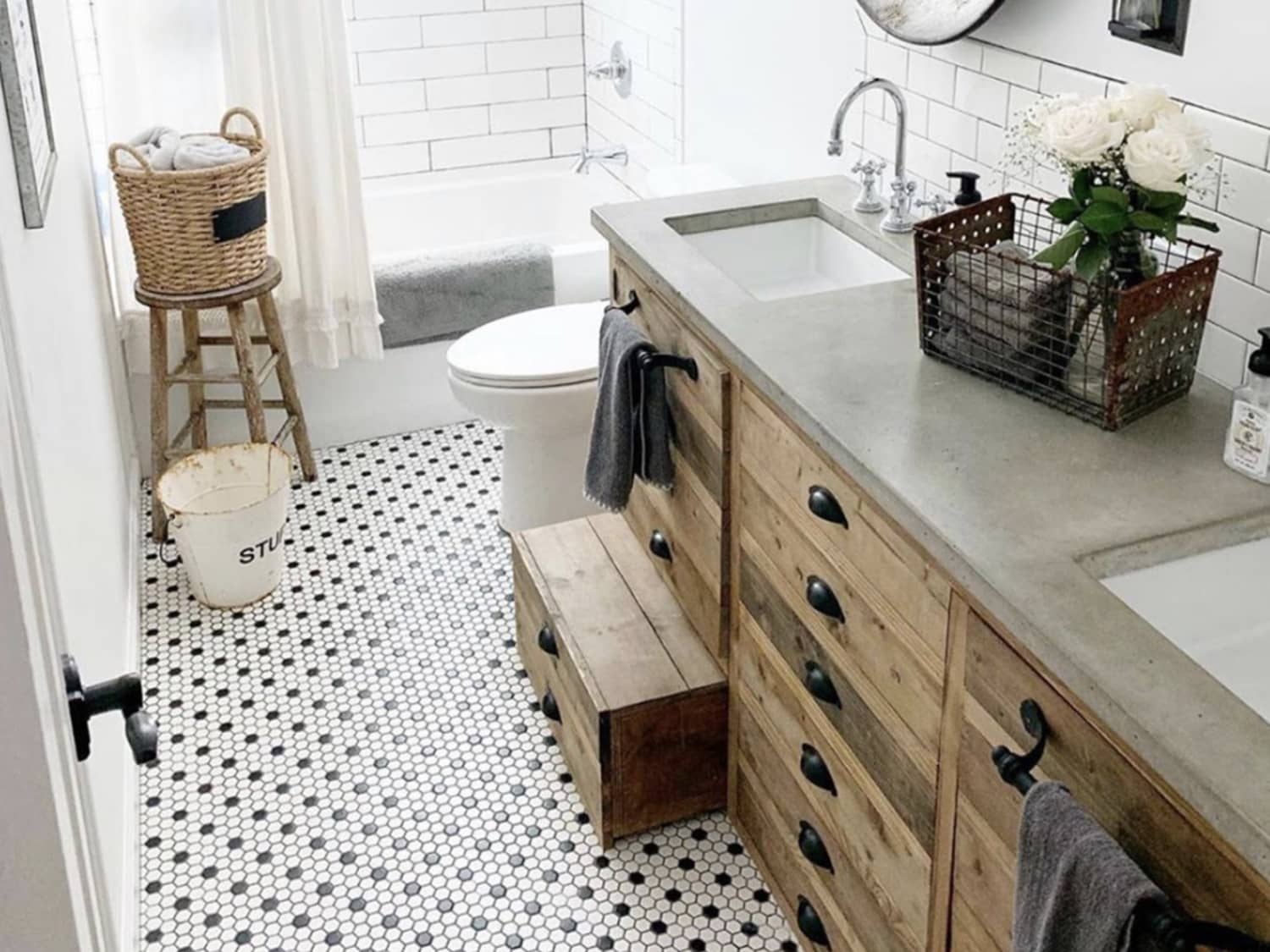But, unless you've seen one for yourself, words like' minimalist',' futuristic'' linear' won't mean much for you and hence it's best that you browse the net a little to obtain a glimpse at the many styles of bathroom vanities first. In the bathroom, people have a decision of picking out between a one sink bathroom vanity or maybe a double sink bathroom vanity.
Images about Farmhouse Bathroom Vanity Ideas
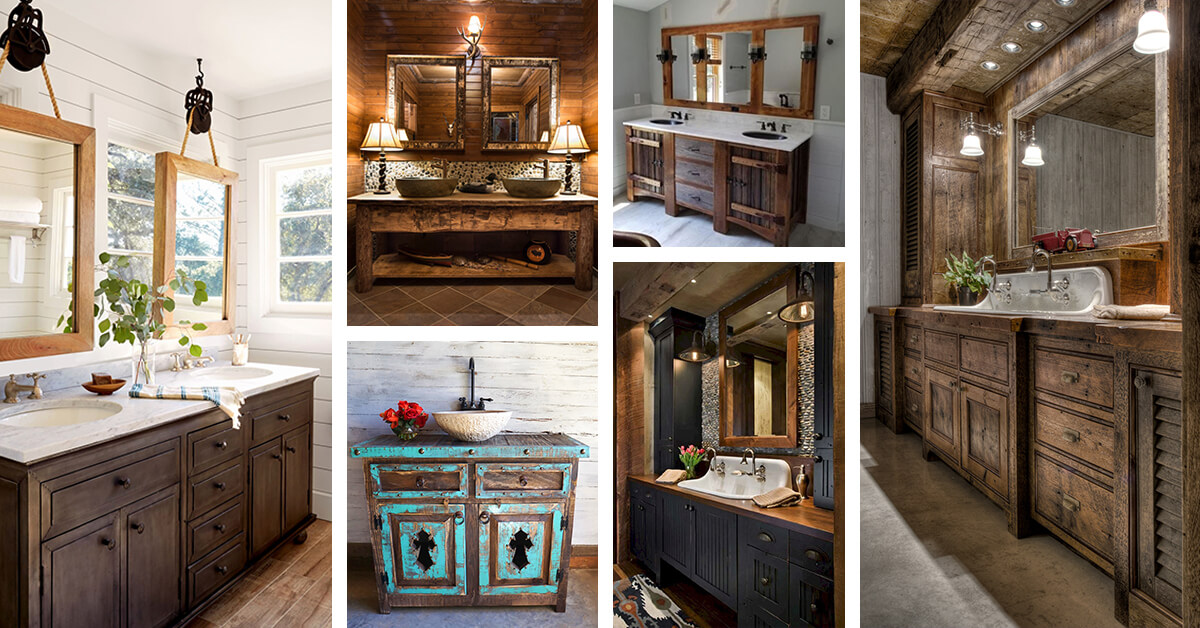
An excellent way of saving the area is by utilizing the wall mounted bathroom one-time vanity. You'll find many different types of bathroom vanities that improve the decor of the room. Finally, for the ultra custom look is the artistic or decorative bathroom vanity. Contemporary vanities are a proven way a homeowner can give the home of theirs a personalized look.
19 Stylish Farmhouse Bathroom Vanity Ideas Getting you All Set for

Bathroom vanities additionally differ by sizes depending on the dimensions of the bathroom being modeled. So, purchase contemporary bathroom vanities for contemporary bathrooms. Many men and women have bought vanities only to realize that the door is only going to widen half way before it relationships a wall, or maybe a bath, for instance.
35 Best Rustic Bathroom Vanity Ideas and Designs for 2022
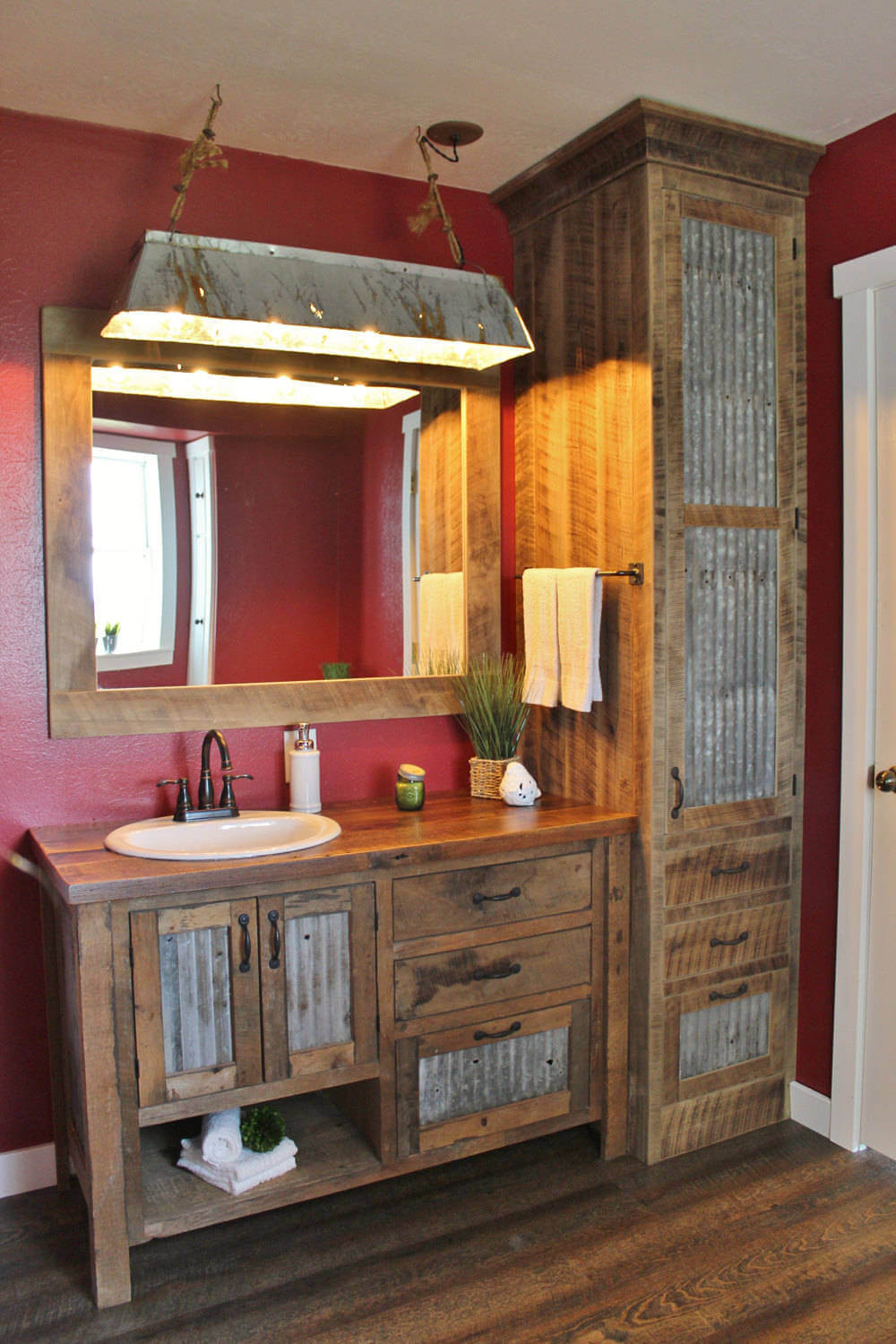
Bathroom vanities may either enrich or even diminish the performance as well as decor of the room, hence it's vital to purchase best vanity set for the bathroom of yours that suits both the way of yours of life along with visual style. But such vanities would stay inconvenient in case you own modest size bathroom.
20 Best Small Farmhouse Bathroom Design Ideas with a Difference
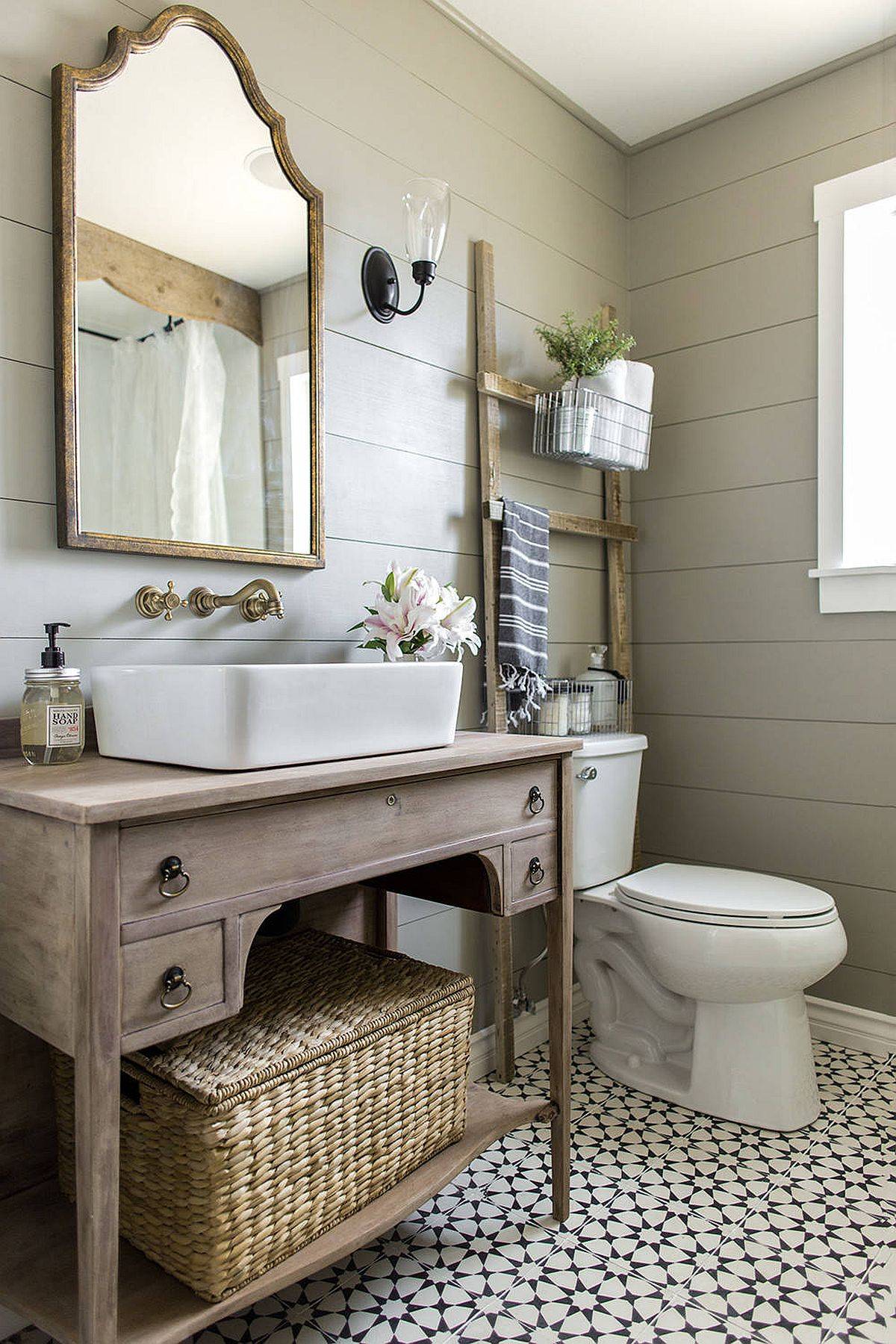
35 Best Rustic Bathroom Vanity Ideas and Designs for 2022
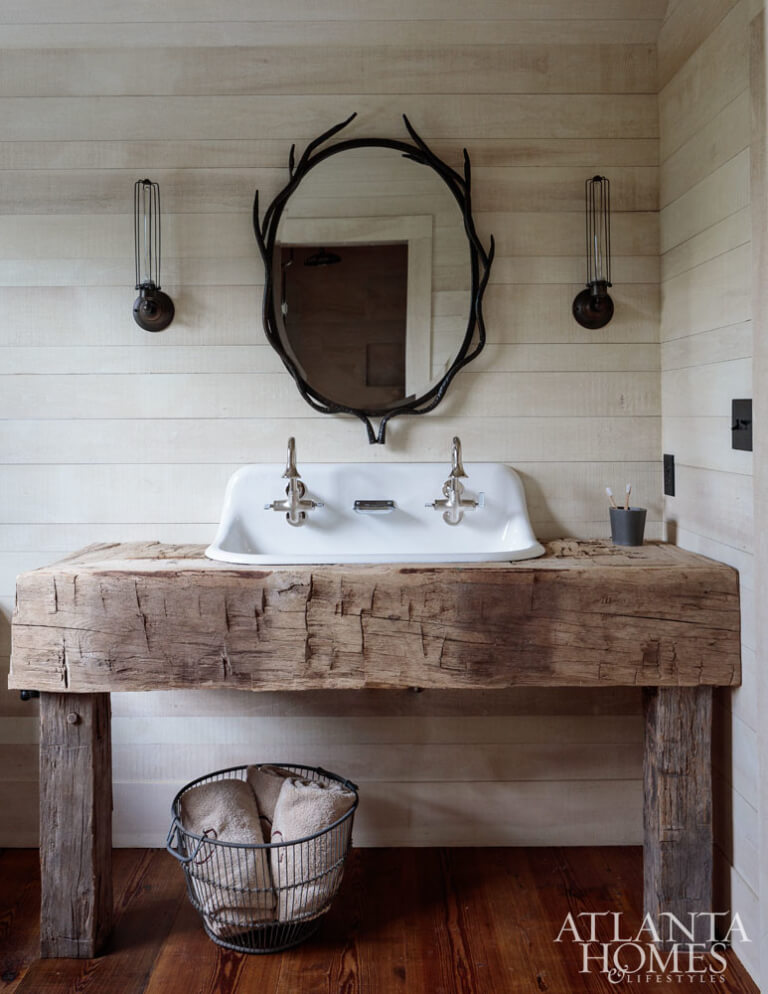
31+ Impressive DIY Rustic Farmhouse Bathroom Vanity Ideas
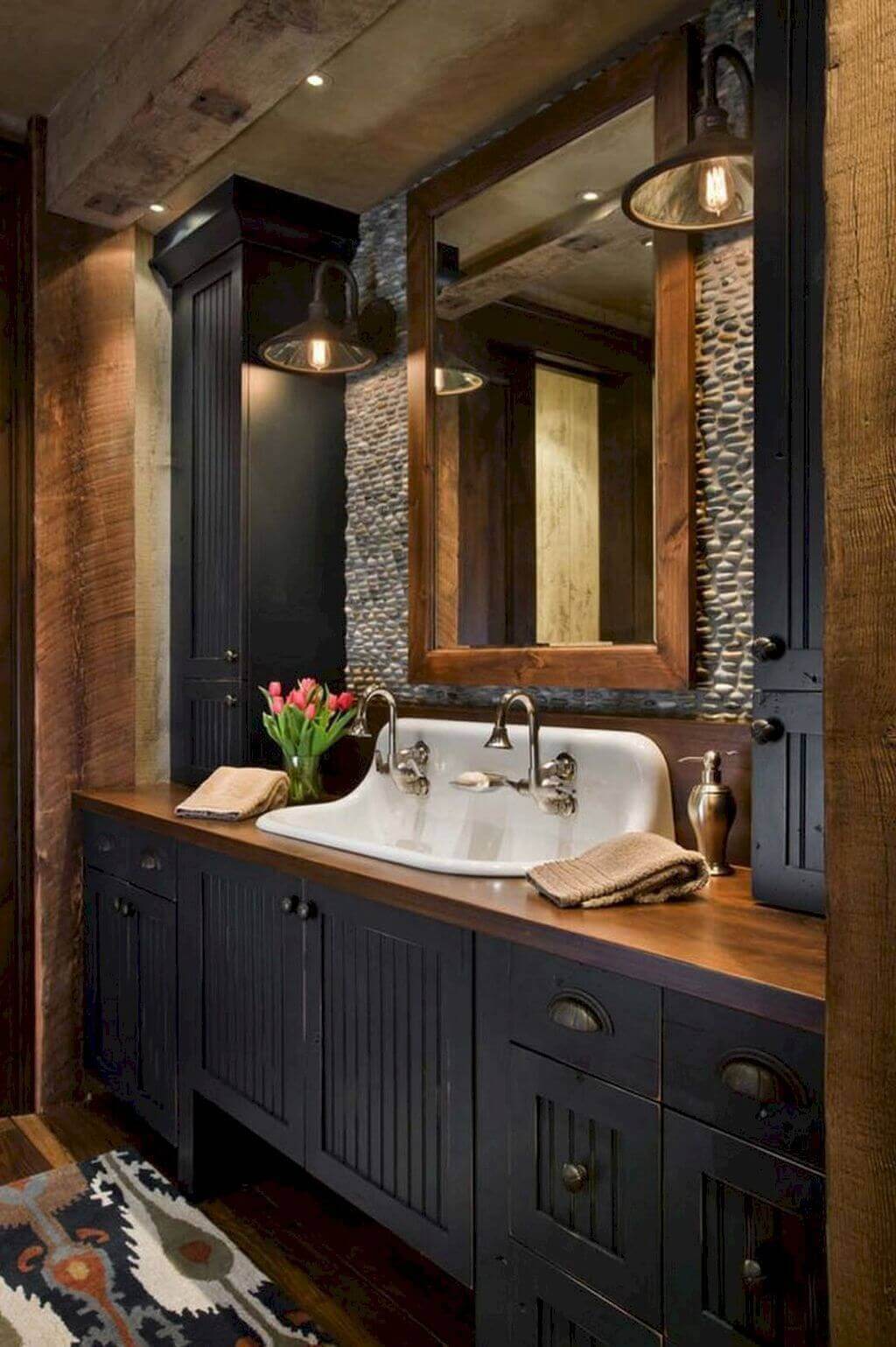
9 Rustic Farmhouse Bathroom Vanity Ideas to Add Country Charm
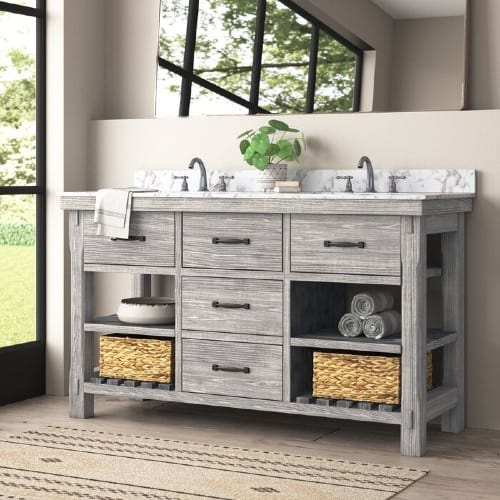
Charming Farmhouse Bathroom Decor [13 Simple u0026 Sweet Ideas!]
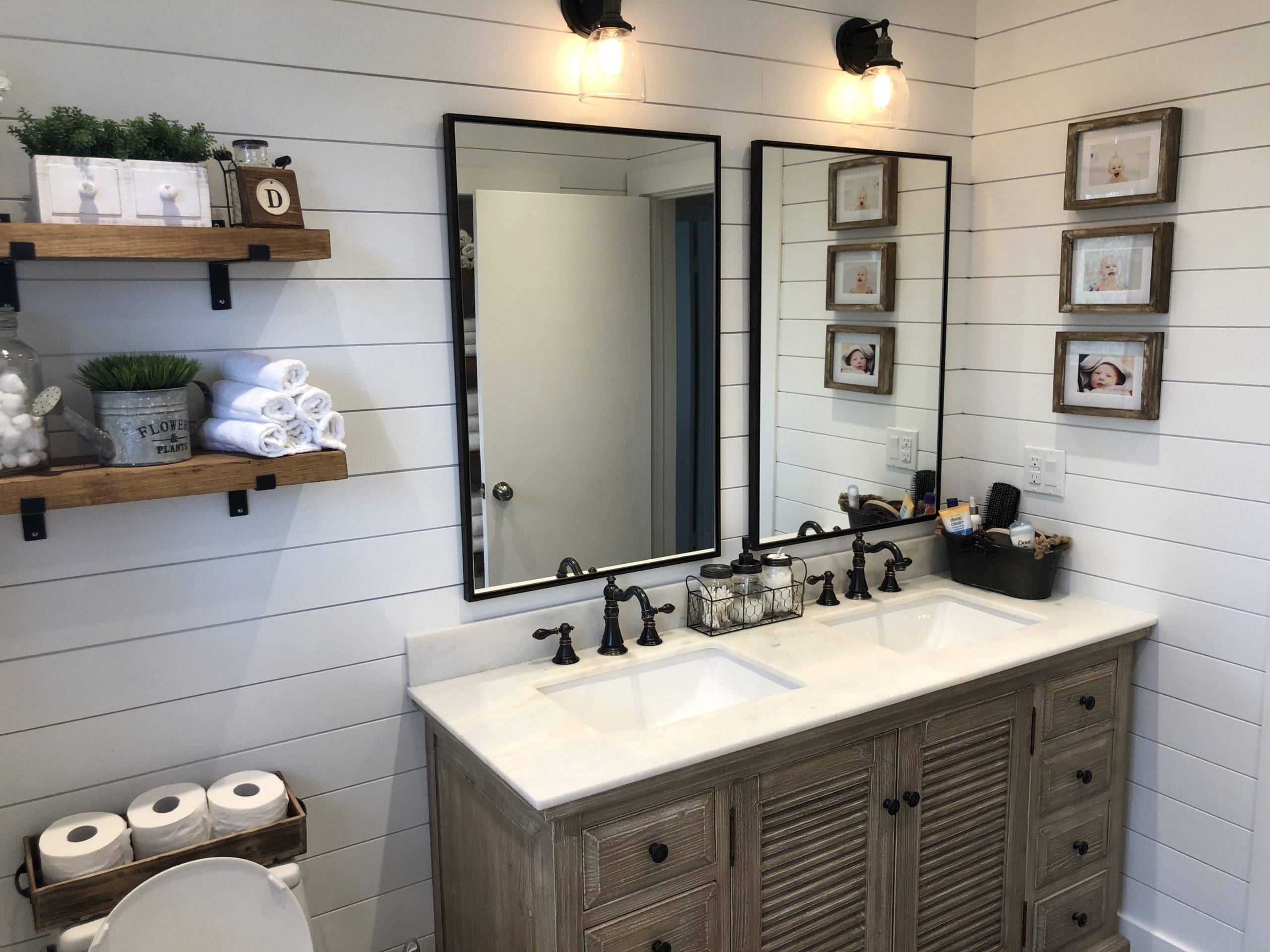
15 Modern Farmhouse Bathrooms
/modern-farmhouse-bathroom-ideas-4147466-hero-e3807164753548d39a60f64ba3ebc6aa.jpg)
8 Clever Ideas to Use Vintage Ladders at Home

35 Best Rustic Bathroom Vanity Ideas and Designs for 2022
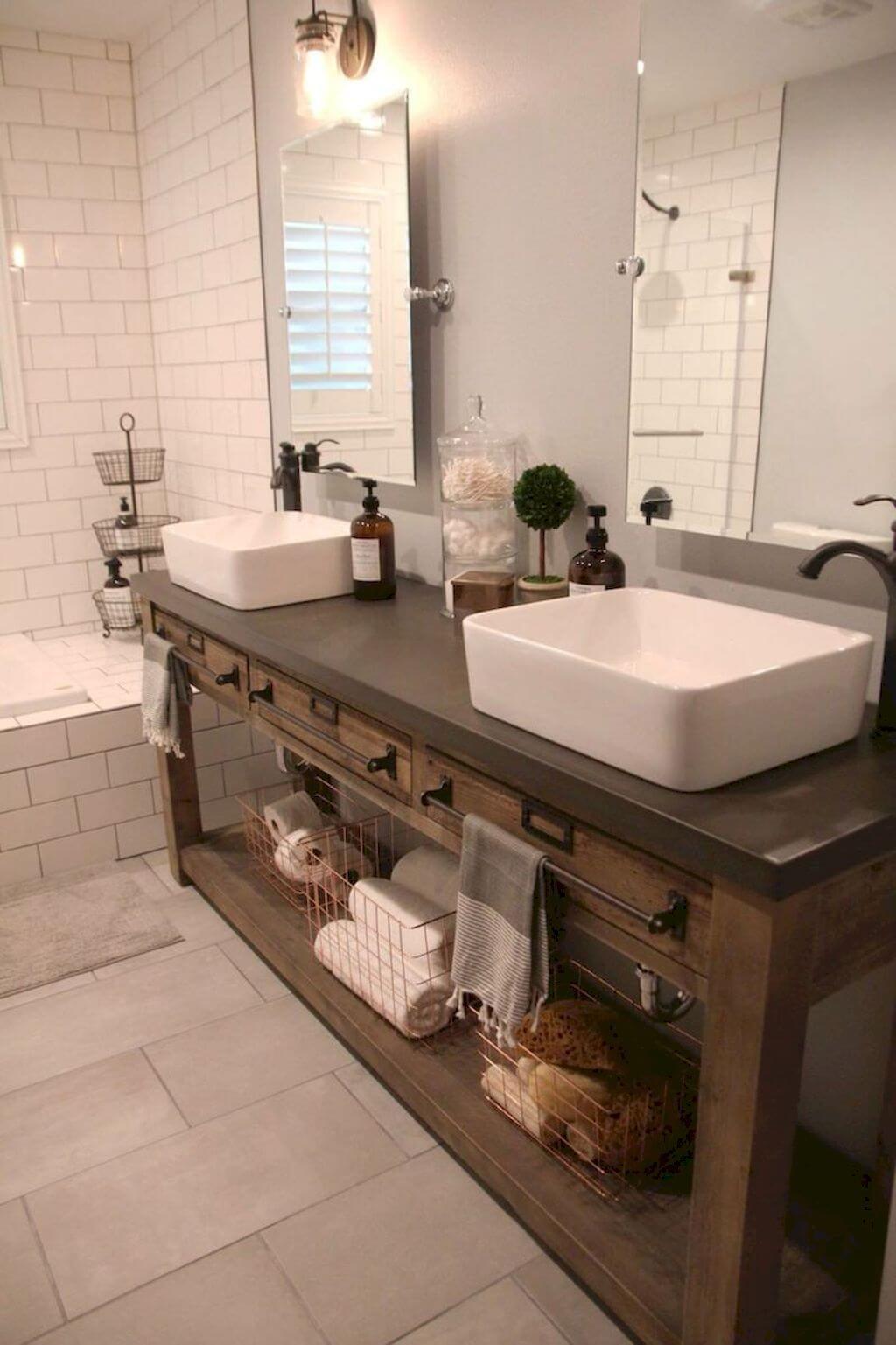
The Best Farmhouse Bathroom Decor – Farmhouse Bathroom Decor Ideas
31+ Impressive DIY Rustic Farmhouse Bathroom Vanity Ideas
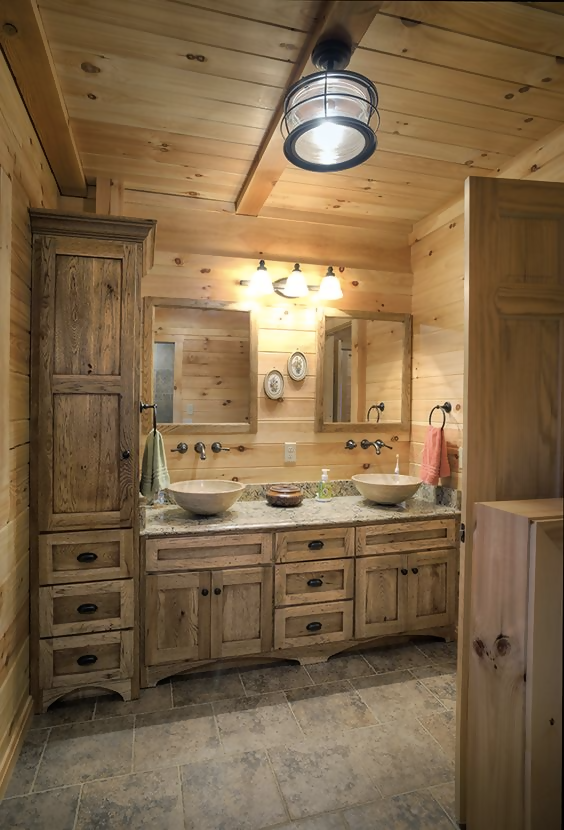
Beautiful Bathroom Vanity Design Ideas
:max_bytes(150000):strip_icc()/rustic-bathroom-58d80d885f9b58468331e49d.jpg)
Related Posts:
- Curved Front Bathroom Vanity
- Cambria Quartz Bathroom Vanity Tops
- Narrow Bathroom Vanity And Sink
- 48 Inch Rustic Bathroom Vanity
- Bathroom Vanity Decor Ideas
- Single Sink Bathroom Vanity Set
- Bathroom Vanity Linen Cabinet Combo
- Cedar Bathroom Vanity
- Bathroom Vanity Light Height
- Bathroom Vanity Timber Top
